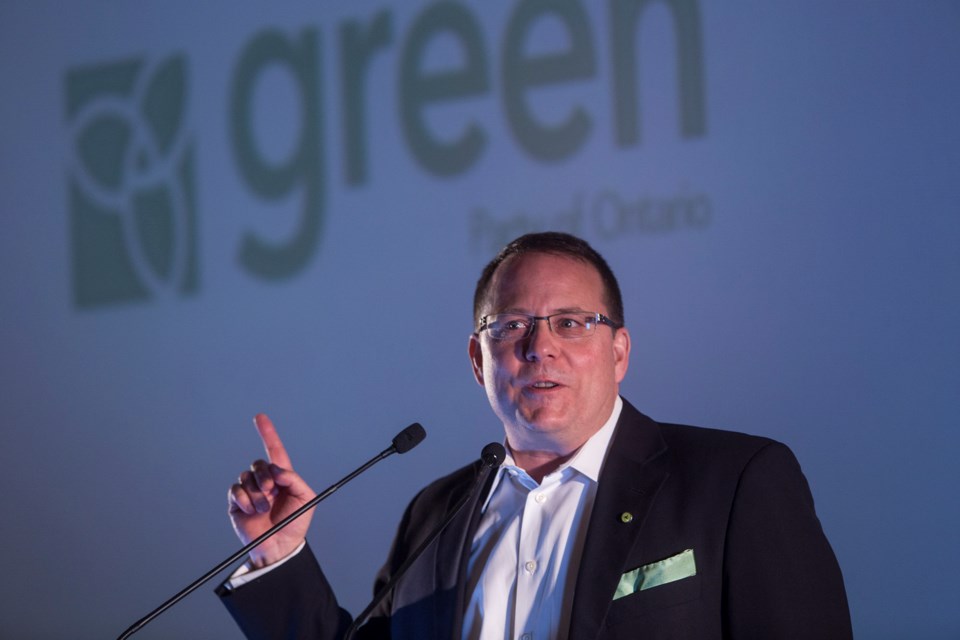Ontario Green Party leader and Guelph MPP hopeful Mike Schreiner says lowering the voting age to 16 will get more people involved and engaged in the political process.
Schreiner discussed the lower voting age at a democracy forum at Ryerson University earlier this week that featured all four provincial party leaders.
He told GuelphToday Tuesday that a lower voting age is something the Green Party has advocated for some time.
“I can tell you, I know a lot of 16 year olds that are more engaged in politics than adults,” Schreiner said over the phone Tuesday.
“I was just speaking to a class of Grade 7 students that were complaining I wasn’t in favour of lowering it to 12,” Schreiner said with a laugh. “I told them I thought 16 was a good place to start.”
The ultimate goal is to increase engagement and voter turnout, something all parties seem to agree on.
Liberal MPP Arthur Potts has put forth a private members bill in the Ontario Legislature calling for the lowering of the voting age. It won’t be heard until after this June’s provincial election.
In the 2014 provincial election voter turnout was around 52 per cent. In the 2011 provincial election it was 48.2 per cent.
“We need more eligible voters to be voting. Right now, getting youth out to vote is a challenge,” Guelph MP Lloyd Longfield told GuelphToday Tuesday.
“We are not talking about (lowering the voting age) federally, but I’m always interested to see what the provinces are doing and how far that one goes,”
Schreiner said 16 is a good age to allow someone to vote for a couple of reasons.
One, that’s when high school students take Grade 10 civics class “and are usually really engaged about how our system works.”
“Having them vote while they’re really engaged with the process establishes a life-long habit of voting,” Schreiner said.
Secondly, when youth leave home around the age of 18 for university or work, there can be confusion about where they should vote and if they are on the voters’ list.
“Prior to that being a complicating issue and when they are the most engaged in learning about the way the political system works, I think that’s a great way to get young people involved,” he said.
Schreiner recently spent a day at John F. Ross high school talking to civics students and was extremely impressed.
“Young people are quite informed. They know that the issues are and quite passionately and articulately talk about those issues.
“Let’s get them involved while they’re interested and while they’re engaged or certainly informed,” Schreiner said.
